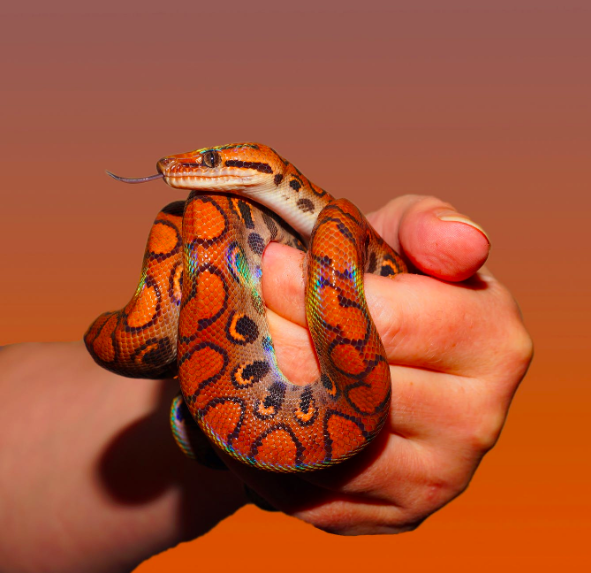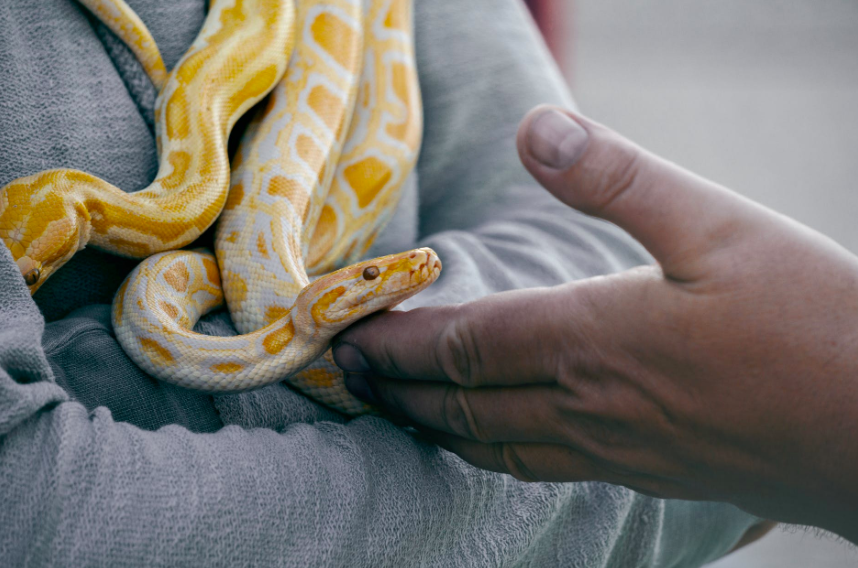Pet Snake 101: How to Purchase and Care for a Reptile
Having a pet snake turned out to be one of the most exciting experiences in a lifetime of raising animals.
My parents were cat lovers, and I have spent my entire life around them. When I was born, my parents had a good friend who was a professional photographer. As a result, I have a whole photo album crammed full of baby pictures. And there is either a cat or a portion of a cat in every single photo. I kid you not.
I adopted a variety of pets since then. First I had mice; next, I had gerbils. Then there was a brief period where I became adept at snaring gophers at the local park. That earned me an article in the local newspaper earning me the nickname "gopher roper."
As an adult, I began adopting exotic animals. I had kangaroo rats, ferrets, spiders, and eventually, I bought a pet snake. I named him Henry, and in many ways, he was my all-time favorite pet. However, I purchased Henry on a whim, leading to my one regret. I wish I had taken the time to read up on pet snakes and how to care for them ahead of them. It was a bit of a bumpy ride until I learned the basics.
Pet Snake Basics

Source: Pexels
There are several points to consider before purchasing a snake.
First of all, realize that adopting a pet snake is taking on a long-term commitment. Many species have a life expectancy of 20 years or longer.
Next, you need to make sure you have what it takes to feed prey animals to your pet snake. You will also need to consider the fact that snakes are great escape artists, so you will need to buy a proper enclosure.
How to Choose the Best Pet Snake
Whenever possible, you should purchase your snake from a reputable breeder or a reptile specialty store. Wild snakes can carry diseases and are difficult to tame.
You will also want to do a quick exam of your pet snake. Look for any signs of illness like closed or milky eyes or bubbles coming from its nose. Likewise, look for any signs of injury.
Most importantly, you need to consider what kind of pet snake to purchase. As pretty as snakes are, giant constricting snakes and venomous snakes can be a safety risk for beginners.
5 Great Beginner Snakes
Below is a list of pet snakes recommended for beginners. These pet snakes are easy to find, care for, and are affordable.
Corn Snakes
Corn snakes (Pantherophis guttata) are one of the most popular pet snakes because of their demeanor, availability, and their color combinations.
Mature corn snakes average 3 to 5 feet in length, but can sometimes grow as long as 6 feet. Furthermore, they are easy to keep requiring only a 20 to 30-gallon enclosure.
Depending on their size and color variations, corn snakes cost around $25 to $50.
California Kingsnakes
California kingsnakes (Lampropeltis getula californiae) are probably the most popular of the kingsnake family among reptile keepers. This pet snake comes in a variety of colors and patterns. They don't grow too long.
Averaging about 3 to 4 feet in length, they only require a 20-gallon enclosure. You can purchase this pet snake for about $50 to $60.
Gopher Snakes
Gopher snakes (Pituophis spp.) are relatively easy to find, come in a variety of colors, and are reasonably priced. With an average adult length of 4 to 5 feet, you can house them in a 20 to 30-gallon enclosure. You can expect to pay around $40 to $60 for this pet snake.
Rosy Boas
Rosy boas (Lichanura trivirgata) are a stunning small boa constrictor that comes in a variety of colors.
They are very docile and average only 2 to 3 feet in length. For that reason, a 20-gallon enclosure is just perfect for this pet snake. Rosy boas cost about $30 to $40 at reptile shows and from specialty pet stores.
They are not readily available at retail pet stores.
Ball pythons
The ball python (Python regius) is probably the most popular pet snake in America today. They have a shy demeanor and are easy to take care of and house. Female ball pythons average 3 to 5 feet in length. However, the males are smaller averaging 2 to 3 feet in length. A 20-gallon tank is ideal for this pet snake.

Source: Pexels
Necessary Equipment
So you decided to get a pet snake. There are a few pieces of equipment that you must have before you bring one home with you.
Enclosure
First of all, remember that pet snakes are persistent when it comes to finding a way to escape. For this reason, we strongly recommend that you purchase an enclosure designed specifically for reptiles. No one wants a snake roaming the house. Reptile terrariums work best for snakes. They come in a variety of sizes, depending on your needs. Be sure to look for one that has a waterproof base.
Additionally, it is best to purchase one with front opening doors. They provide easy access for maintenance and feeding. Most importantly, buy one with a specially designed lock to prevent escape. They are standard on most pet snake and reptile enclosures.
Hiding Place
In addition to their enclosures, pet snakes also enjoy having a place to hide. Without a safe hiding place, snakes can develop stress that may affect their appetite and overall well-being. Therefore, we recommend you look around and find a rock cave or reptile shelter for your snake.
Bedding
Next, you will need material to line the bottom of your snake enclosure. Typically, mulch or wood shavings serve as the perfect substrate or bedding. There are a variety of options on the market. Be sure to look for bedding that is dust-free and non-toxic. Also, you might want to select a hypoallergenic brand.
Heating Pad
Snakes are cold-blooded animals. In the wild, they raise their body temperature by lying in the sun.

Source: Amazon
Inversely, they lower it by slithering over to the shade. Things are different when you have a reptile enclosure for your pet snake. What you do is create what is called a heat gradient within their terrarium.
Fortunately, all you need to do is purchase a reptile heating pad to place beneath your snake's enclosure. Most importantly, situate the heating pad to one side. That way your snake can regulate body temperature by moving back and forth between the hot and cold zones.
Feeding Your Pet Snake
Now we get to the hard part, deciding how to feed your snake. Snakes are carnivores and typically prefer to eat their food whole. Many of them eat rats and mice. Some eat other reptiles or insects. Feeding your pet snake pre-killed prey is the easiest option. Fortunately, most snakes will eat dead prey. It is far easier to keep pre-killed prey in your freezer than to have to purchase it live.
At first, you may have to experiment to determine what size prey to purchase for your pet snake. The general rule is to buy food for it that is roughly the same size as the middle of its body. However, you might need to experiment until you find the perfect size.
A word of caution, some snakes can be finicky eaters. In an extreme case, you may need to take your pet snake to a veterinarian for help feeding it.
Watering Your Snake
Snakes like all animal, require daily water. Be sure to remember to keep a supply of water in your snake's enclosure at all times. Snakes like to swim. Therefore, if your enclosure is big enough, you should consider getting them an artificial pond. Best of all, that also provides much-needed exercise.
Exercise
And speaking of exercise, you will want to provide proper climbing equipment for your pet snake. Rocks, trees, or branches are all great options. Do-it-yourselfers can always get creative and make something unique.
Enjoying Your Pet Snake
Purchasing a pet snake can be the adventure of a lifetime. However, getting a pet snake is not as simple as picking out a dog or cat at the local animal shelter. Nor is it as easy as buying an aquarium and a few fish at the local pet store.
Having a pet snake involves making a long-term commitment. And, you must carefully consider every detail. For example, you need to make sure you have an escape-proof enclosure. You will also need to select the right kind of snake for you and your loved ones. Finally, you need to make sure you can stomach their feeding requirements. (pun intended)
Is there anything we did not cover in this article about pet snakes? Do you have any questions regarding other types of snakes? If so, please let us know in the comments section, below.
